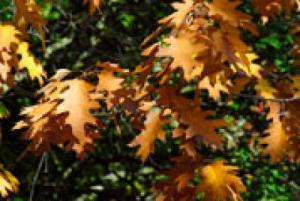Mar 31 2014
A study by the University of Southampton suggests that on average the end of Autumn is taking place later in the year and Spring is starting slightly earlier.
 This is a photo of autumn leaves.Credit: University of Southampton
This is a photo of autumn leaves.Credit: University of Southampton
A team of researchers examined satellite imagery covering the northern hemisphere over a 25 year period (1982 - 2006), and looked for any seasonal changes in vegetation by making a measure of its 'greenness'. They examined in detail, at daily intervals, the growth cycle of the vegetation – identifying physical changes such as leaf cover, colour and growth.
The project was led by University of Southampton Professor of Geography Peter Atkinson, who worked with his colleague Dr Jadunandan Dash and in collaboration with Professor Jeganathan Chockalingam from the Department of Remote Sensing at the Birla Institute of Technology in India.
Professor Atkinson says: "There is much speculation about whether our seasons are changing and if so, whether this is linked to climate change. Our study is another significant piece in the puzzle, which may ultimately answer this question."
The team was able to examine the data for specific vegetation types: 'mosaic' vegetation (grassland, shrubland, forest and cropland); broad-leaved deciduous forest; needle-leaved evergreen forest; needle-leaved deciduous and evergreen forest; mixed broad-leaved and needle-leaved forest; and mixed-forest, shrubland and grassland. They analysed data across all the groups, recognising that forests which have not changed size due to human intervention, for example through forestry or farming, provide the most reliable information on vegetation response to changes in our climate.
The most pronounced change found by the researchers was in the broad-leaved deciduous and needleleaved deciduous forest groups, showing that Autumn is becoming significantly later. This delay in the signs of Autumn was generally more pronounced than any evidence for an earlier onset of Spring, although there is evidence across the groups that Spring is arriving slightly earlier.
Professor Peter Atkinson comments: "Previous studies have reported trends in the start of Spring and end of Autumn, but we have studied a longer time period and controlled for forest loss and vegetation type, making our study more rigorous and with a greater degree of accuracy.
"Our research shows that even when we control for land cover changes across the globe a changing climate is significantly altering the vegetation growth cycles for certain types of vegetation. Such changes may have consequences for the sustainability of the plants themselves, as well as species which depend on them, and ultimately the climate through changes to the carbon cycle."
The study used the Global Inventory Modelling and Mapping Studies (GIMMS) dataset and combined satellite imagery with an innovative data processing method to study vegetation cycles.